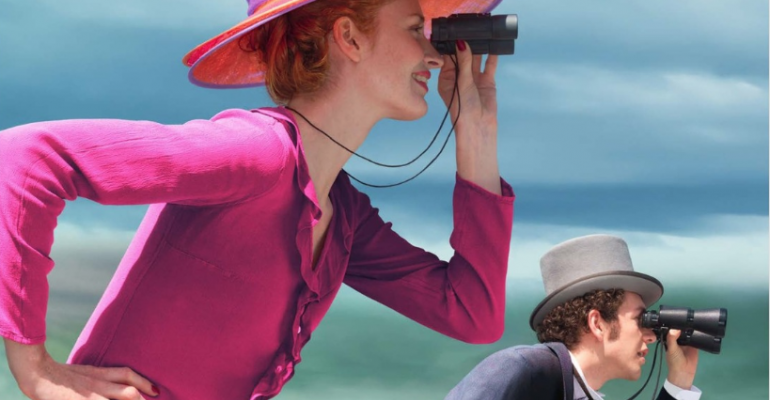Editor's note: This is part 1 in our 2021 State of the Industry that will be published weekly .
Picture this:
It’s 1919, and a pandemic is raging across the world. It’s the H1N1 virus and one-third of the world’s population has been infected. As it subsides, the opulence and over-the-top decade of The Roaring Twenties, replete with surging economy, a cultural edginess that gives birth to the Jazz Age and the Harlem Renaissance, and the passing of new political freedoms arrives! Parties, despite Prohibition, were legendary.
Jumping forward, we can look to the late 1970s and early 1980s, a time period in which many catering and events companies were founded. And yet, says Carl Sacks, executive director of the Leading Caterers of America, in an article for Catersource magazine (a sister publication of Special Events), the U.S. economy was in a tailspin during the early 1980s. “For those of you who are old enough to remember that era, inflation, driven by oil price increases, was through the roof. To get inflation under control, the Federal Reserve raised interest rates drastically, to the point where in early 1982 a regular 30-year mortgage had an interest rate of 17.5%,” he said.
“With interest rates at that level, it was amazing that anyone could afford a place to live, much less be able to hire a caterer. The entire economy was affected, with unemployment peaking at 10.8% in November 1982—well above the current level,” added Sacks.
Yet during that period, when it seemed this might be a downward economic spiral from which we’d never emerge, the industry began to recover and start its march toward very substantial growth. “In 1982,” Sacks says, “the catering sector broke
$1 billion in annual revenue for the first time. For most of the following two decades, [it] was the fastest growing foodservice sector, except for snack (coffee) bars.”
Since then, there have been other crises that have tested the mettle of the catering and events industry: the 1987 Black Monday stock meltdown, 9/11, the Great Recession…all momentous challenges. But nothing like COVID-19.
The event industry felt confident going into 2020, with 90% of in-house event professionals and 79% of independent event professionals predicting they would stage the same number or more events in the new year than they did in 2019. 
In a tent that normally holds 300 people, Marcia Selden Catering and Events accommodated one-quarter the number, and placed signifiers for guests to occupy when on the dance floor. Photo courtesy Marcia Selden Catering and Events
Other “stand out stats” saw coping with new technology affecting both in-house and independent planners; huge jumps related to the uncertain economy, but also affecting independent planners much more than in-house; and, for in-house event planners, the “uncertain finances” of their companies was top of mind. And while reduced client budgets are a challenge for independent planners, there is a sad bright spot for those who are still in business: a 29% jump in the likelihood that they would have less competition in 2021, than more.
For well over a decade, Special Events has been conducting a study that touches upon statistics such as the above, as well as the outlook for specific types of events, technological challenges, and more. This year, we added a few new questions to gather thoughts on the impact of COVID, as well as diversity and inclusion, and willingness to travel. Let’s have a look:
The impact of COVID on our businesses
So, how does the ongoing pandemic resonate with our surveyed audience? We asked,
Do you agree that the COVID-19 pandemic represents the most severe challenge your company has ever faced?
- Definitely - 83%
- Possibly - 9%
- Probably - 6%
- No - 2%
Essentially, 98% chose an answer that leaned more toward yes than no. That is really a strong “yes” statement, especially for those companies who have been in business for decades and made it through the recession, 9/11, even fires that destroyed company headquarters. Only 2% said, “no.” No, this is not the most severe challenge my company has ever faced.

Oysters XO upped their game with a new COVID-safe outfit, adding a face mask, plastic gloves (in addition to the shucking glove), and exchanged business cards for a QR code. Servers also place shucked oysters in a sustainable bamboo boat so that guests are the only one touching the oysters after they have been opened. Photo courtesy Oysters XO
Regarding special events
Most of us experienced event cancellations, reschedules, or that the deposit provided for an event was now enough to pay for the entire event, with greatly diminished “attendance.” I asked those surveyed to report on their events between March 14 and September 30, 2020.
- 59% of all events were entirely cancelled
- 5% were completed on the date contracted
- 4% of events were completed on the date contracted but with greatly reduced attendance numbers
- 4% had events rescheduled and completed before 9/30/2020
- 3% had events rescheduled into Q4 2020
- 26% had events rescheduled into 2021
What does this mean? Essentially, with 59% of events cancelled in 2020 and 26% rescheduled into 2021—planners have been operating on about 16% of the revenue they are used to, and even that pittance is no doubt diminished given that many events had guest counts cut to the base minimum, depending upon state mandates.
Come back next week for part 2 of our State of thet Industry forecast. Also, check out the Special Events Magazine Winter Issue for 10 years of look-back data.





